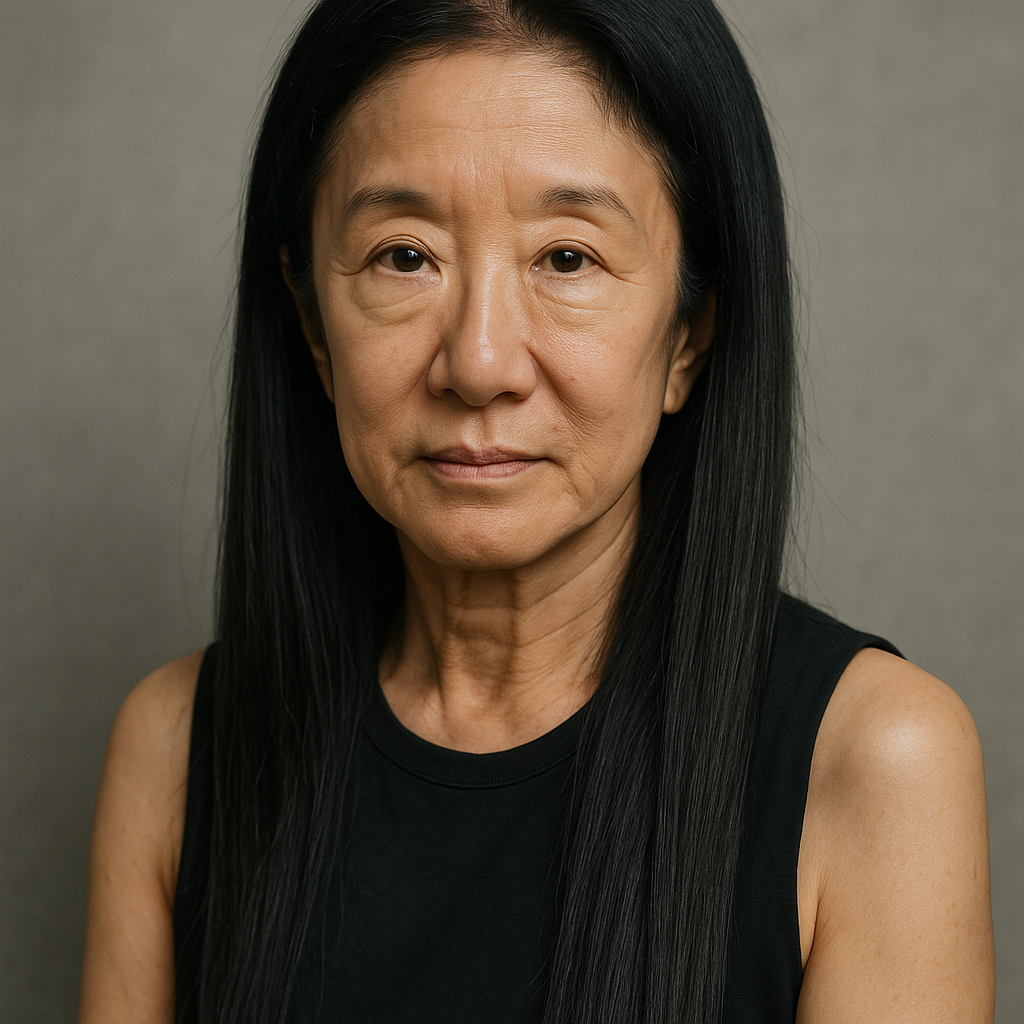
Vera Wang has long been synonymous with bridal couture, dressing the world’s most famous brides and redefining the wedding industry one gown at a time. But the woman behind the name is far more than a designer of white dresses. Her story is one of relentless reinvention, quiet resilience, and a sharp sense of timing—not just in fashion, but in life.
From Skating Rinks to Fashion Editorial
Born and raised in New York City, Wang carved an unconventional path to becoming a global fashion icon. Before she ever sketched a wedding dress, she was a competitive figure skater with Olympic ambitions. When that dream slipped away, she pivoted. First, she moved to the pages of Vogue, where she made history at just 23 as the magazine’s youngest-ever fashion editor. Later, she joined the refined world of Ralph Lauren, designing across categories from shoes to sleepwear.
Launching a Bridal Revolution at 40
The most unexpected chapter began when Wang was 40. At an age when many women were told their careers were winding down, she was only getting started. With encouragement from her father—and no financial support from him—she launched her eponymous label in 1990, opening a bridal salon at the Carlyle Hotel. Bridal fashion at the time was stiff, traditional, and overly ornate. Wang brought a breath of fresh air with clean lines, refined drama, modern silhouettes, and personal storytelling through design. Her vision sparked a revolution in the industry.
Her first client? None other than Ethel Kennedy. Wang recalls laboring over the dress for eight months, only to watch the bride run outside minutes after the ceremony and join the Kennedys in a game of football. The moment crystallized what Wang’s designs were all about: beauty, yes, but also freedom, fun, and a sense of the unexpected.
Creating Trends, Not Just Dresses
That blend of sophistication and irreverence would become her signature. When she married investor Arthur Becker in 1989, Wang honored her Chinese heritage with a traditional change of outfit. She slipped out of her gown into a party dress for the reception. It was a move that would later inspire countless brides to adopt a “second look” for their big day. She wasn’t just designing trends. She was creating them.
As the bridal business flourished, Wang expanded. In 2000, she debuted a ready-to-wear collection that reflected her love for couture, characterized by dramatic draping, intricate construction, and her signature effortless elegance. By 2005, the Council of Fashion Designers of America named her Womenswear Designer of the Year. It was a nod to her influence beyond the altar.
But her ambitions reached even further. The Vera Wang brand evolved into a full lifestyle empire. Fragrance, fine jewelry, eyewear, home goods, beauty, and a widely successful diffusion line with Kohl’s brought her name into the homes and closets of millions. For Wang, the partnership with Kohl’s became deeply personal. It allowed her to connect with women who admired her but couldn’t afford a $10,000 wedding dress. Designing for them became just as fulfilling as dressing celebrities for red carpets.
Excellence Over Time and Trends
What has remained constant across her collections is an unwavering commitment to excellence. Most of her bridal line is still produced in her own U.S.-based ateliers, where craftsmanship is treated as sacred. Wang directly oversees the work of over 200 employees and continues to be deeply involved in creative direction, even after decades in the business.
Now in her mid-70s, Wang is as sharp and driven as ever. Her age has become a topic of fascination online, where her youthful appearance has earned viral attention. But for Wang, that conversation is a distraction from what really matters: the work. “I’m flattered,” she’s said in interviews, “but it was never my goal. I sleep, I drink vodka, I stay out of the sun, and I work.”
That work ethic has been her anchor. Through changes in the fashion industry, the rise of social media, and shifting beauty standards, Wang has kept her head down and her mind busy. She often says that it’s the mind, not the mirror, that determines how we age. “Work was my lifeline that kept me feeling relevant and challenged,” she’s explained. “The mind is more powerful than one could ever understand.”
Looking Ahead: Creativity Beyond the Runway
Wang is candid about how the industry and the world have evolved. She’s noticed how women today face increased pressure to look a certain way, often magnified by social media. In contrast, her early years in fashion were focused more on substance than image. “We didn’t have social media. It was about finding your way,” she says. That mindset has stayed with her.
Despite her fame and accomplishments, Wang remains intensely private and grounded. She avoids the spotlight when she can, choosing instead to focus on mentoring her team, developing new collections, and dreaming up the next creative endeavor. She’s hinted at an interest in film and storytelling, suggesting that the next chapter may lie beyond the runway.
Will she return to the traditional fashion week schedule? It’s unlikely for now. “There’s so much noise,” she’s said, referring to the overwhelming number of shows and the speed of the digital age. “Designers have to deal with so much. Not just creating clothes, but promoting them, standing for something politically, building a social media presence. It’s a lot.” Still, she adds, “never say never.”
What keeps her going is a deep sense of connection to women. From high fashion to department store racks, from couture gowns to prosecco bottles, Wang’s entire career has been about understanding what women want and meeting them where they are. She doesn’t chase trends; she sets them. She doesn’t follow rules; she rewrites them.
Starting a company at 40. Shaking up bridal fashion. Building a lifestyle brand. Redefining what aging in fashion looks like. Vera Wang’s story isn’t just about clothes. It’s about reinvention, resilience, and the quiet power of believing that it’s never too late.

